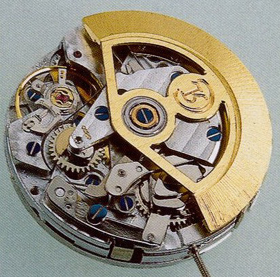Chronograph watches — we write about them all the time. Lately, though, with the holidays on us and some watch lovers looking to buy watches as gifts, we had a lot of interested readers asking questions about chronographs. Here, we try to outline the basics about what exactly a chronograph watch is and how it functions. Remember, we are just touching the surface here. Entire books have been written about chronographs.
Essentially, a chronograph is a watch that measures and records specific intervals of time from a fraction of a second to hours – such as a race, a test, dive times, etc. The Greek translation of chronograph is time writer, and the first patented chronograph watch was invented in 1821 by Nicolas Rieussec.
Generally the stop, start and return-to-zero functions of a chronograph are controlled by pushing the chronograph buttons. Some watches have these functions all working off of a single pusher (called single- or mono-pusher chronographs) while others have two pushers that are usually situated above and below the watch crown on the case side. In these watches, the chronograph timing function is activated by pushing the start button
at 2:00 to start recording the time and by pushing the same button again, to stop the recording of the timed event. Once the time is recorded and read by the wearer, he can return the tracking hands back to zero by pushing the button at 4:00, thereby resetting the mechanism. Some watches also offer a “fly-back function” (referred to as flyback chronographs), wherein, the hand flies back to zero automatically.
There are also more complex chronographs such as Split-Seconds Chronographs (also referred to as Rattrapantes). These watches have two second hands, one of which splits, or appears to divide, from the other so that they can act independently of one another. This technology allows the timing of several events that start at the same time, but have different durations — such as when timing multiple runners in a race. The more complex the chronograph, the more expensive it is.
In addition to regular chronograph watches, there are some high-precision mechanical chronographs referred to as column-wheel chronographs. Whereas in modern chronographs, the functions operate via a series of cams that are added to the base caliber, the mechanism inside a column-wheel chronograph is integrated into the watch and is configured differently. A column-wheel chronograph consists of a toothed mechanism that features notches on the side into which levers slide, engaging the different timing mechanisms. The raised portions of the notches are called columns (hence the name column-wheel chronograph). A chronograph should not be confused with a Chronometer (a movement that is certified by an observatory to meet several very stringent conditions), though some chronographs can also be chronometers (we will cover this subject soon. Stay tuned.).










